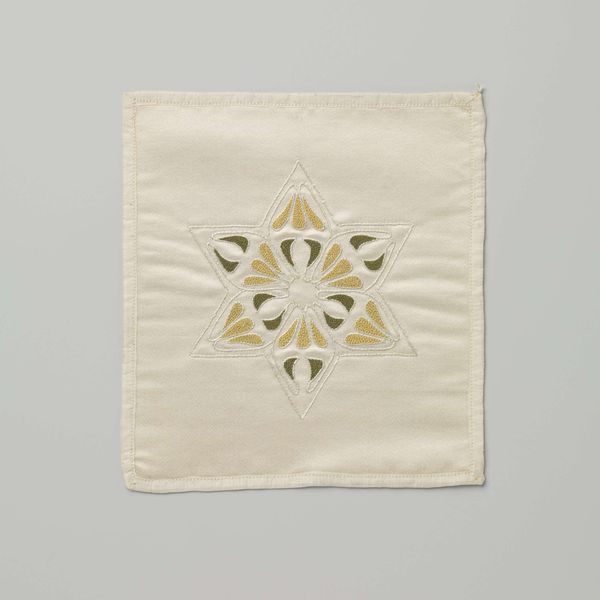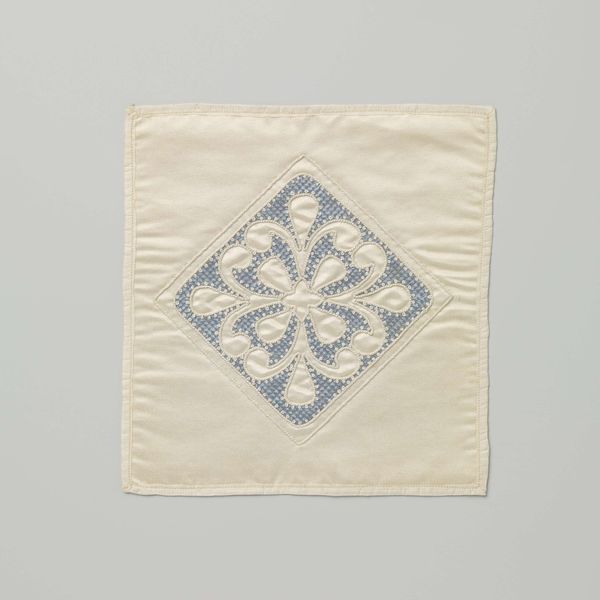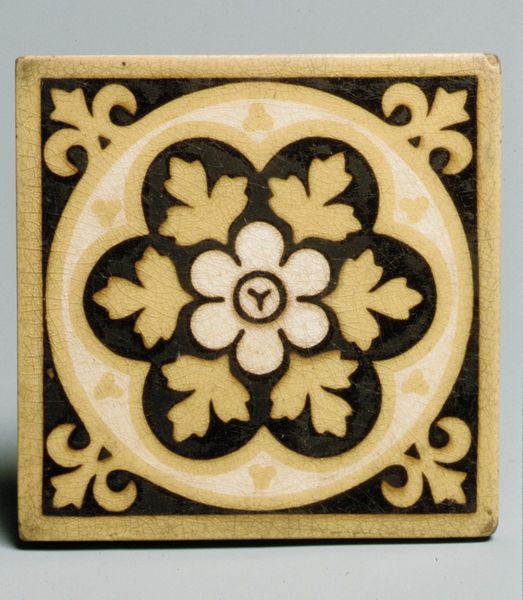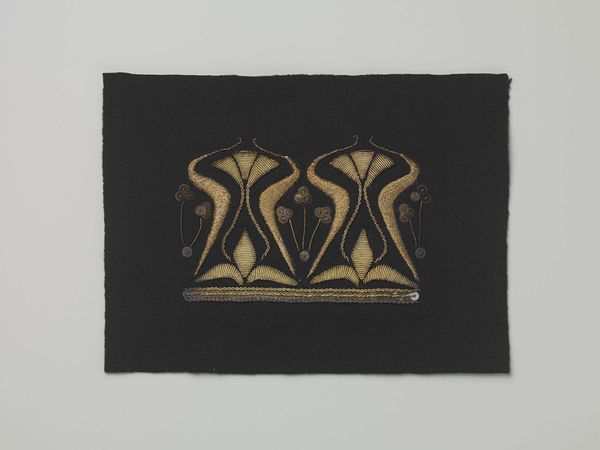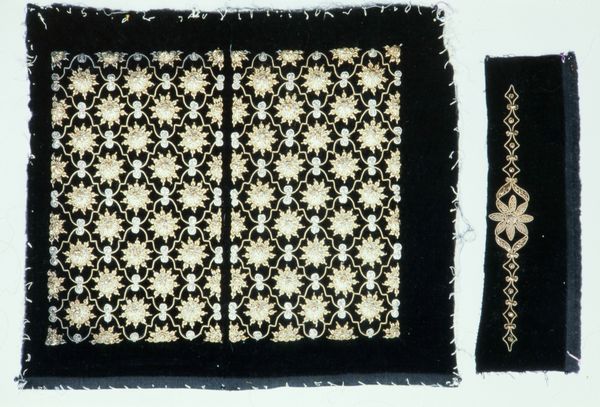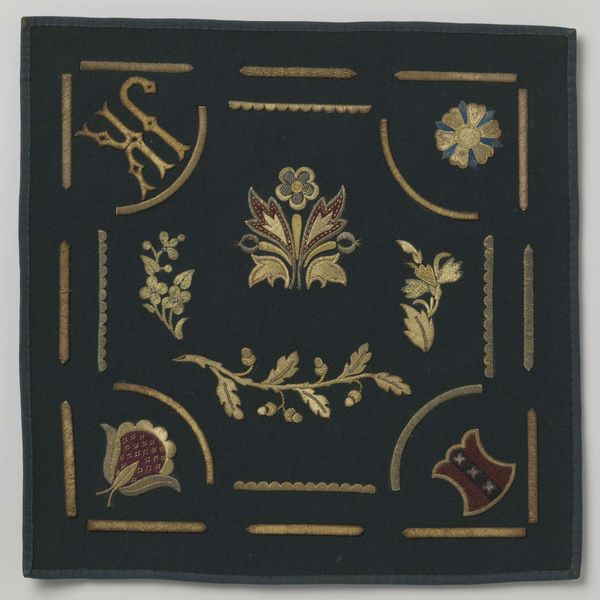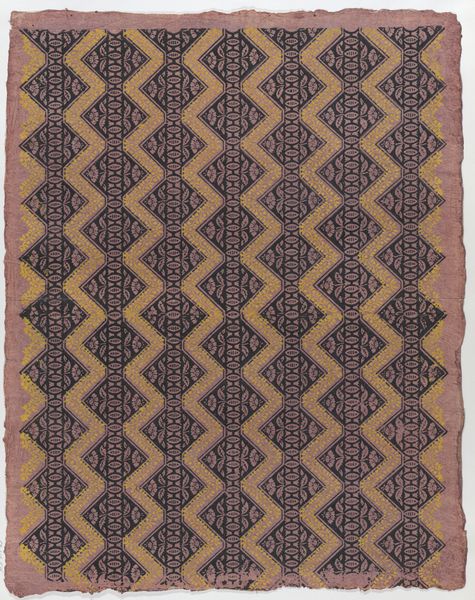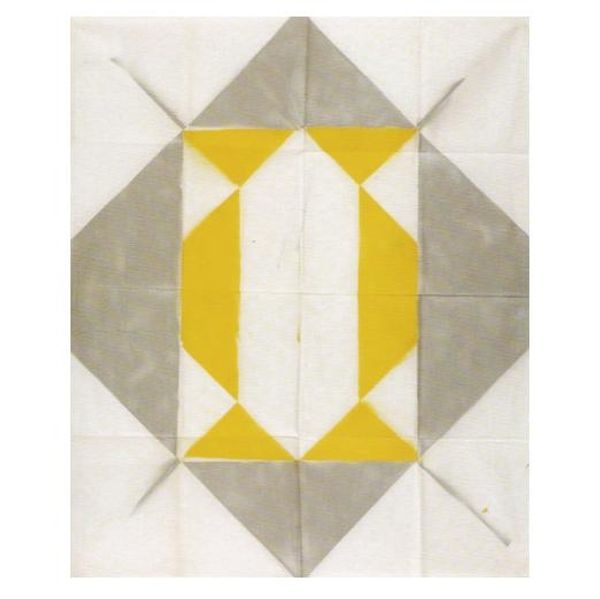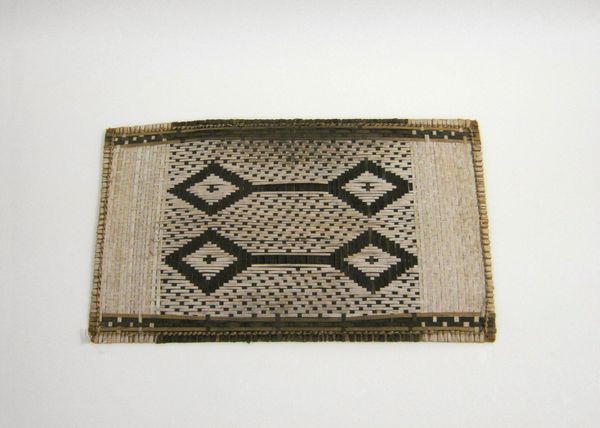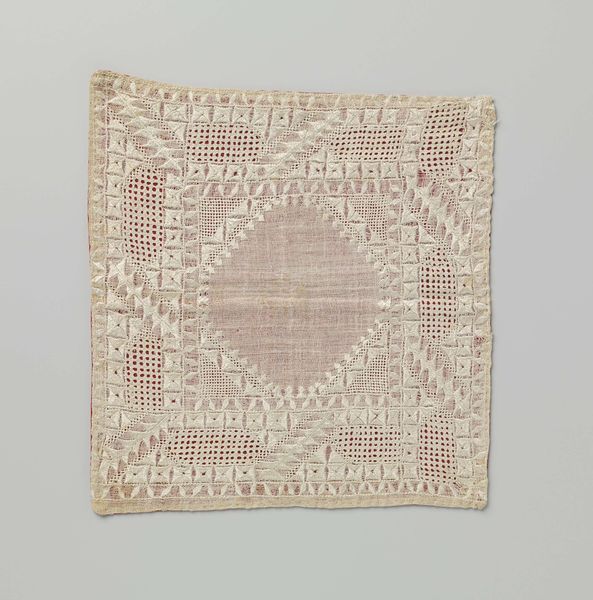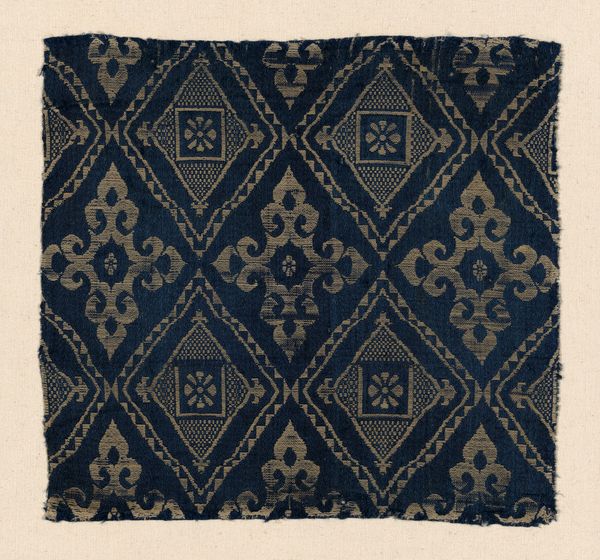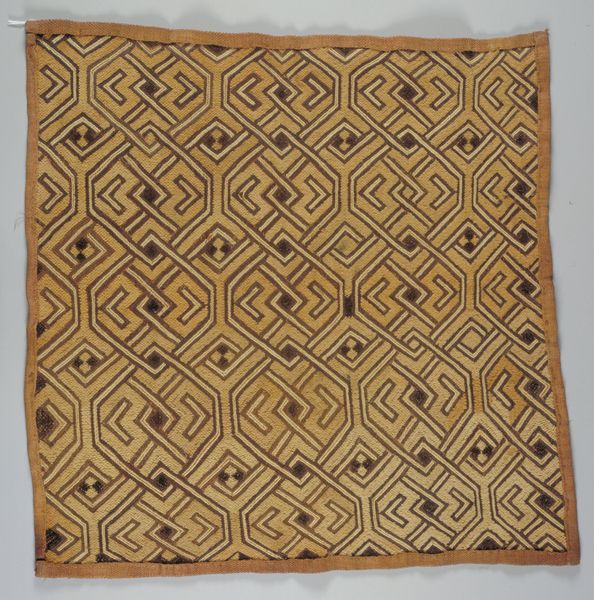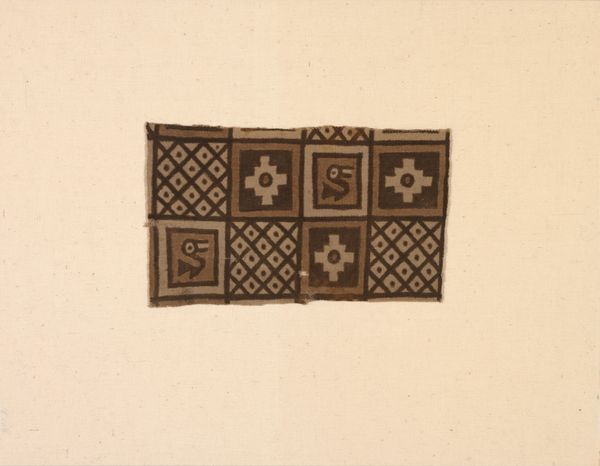
#
natural stone pattern
#
3d printed part
#
man-made pattern
#
abstract pattern
#
repetitive shape and pattern
#
minimal pattern
#
repetition of pattern
#
pattern repetition
#
layered pattern
#
combined pattern
Dimensions: height 27 cm, width 27 cm
Copyright: Rijks Museum: Open Domain
Curator: What catches my eye immediately is this beautifully executed textile work. Entitled "Handwerk met Jugendstilmotieven", it dates back to around 1900 and, remarkably, features design work from the hand of Aagje Tiket. The Jugendstil motifs really do define it, don't you think? Editor: It has an almost unsettling order, a rigorous geometry clashing with the soft textures. The color palette feels restrained and I almost find it cold; how did such precise labor emerge from something called ‘Handwerk’? Curator: Well, "Handwerk" in this case directs our focus. Consider how design reform movements advocated elevating craft to fine art status, challenging the dominance of industrial production. Tiket and her peers aimed to inject artistry into everyday life and make it accessible to more people through these handicrafts. Editor: Absolutely, there’s this tension in it that feels indicative of the contradictions within that impulse. I see the appeal to make beauty part of life for more people, but who really had the access, resources, or even the leisure to create these pieces? Who was this art really for? Curator: Fair point. Examining exhibition records or workshop attendees might illuminate whether Tiket specifically engaged working-class women. We can also note, however, that even aspiration to such democratization shifts artistic focus towards social reform at the time. Editor: I am especially drawn to the stark black backdrop juxtaposed against the creamy leaves, lending a peculiar intensity to the geometric and organic pattern, it reflects a sentiment of nature idealized through this ordered eye. It makes me think of silent textile mills operating at a huge scale with female work force within a society structured along gender and class hierarchies at the time, too. Curator: Yes, the symbolism—these stylized leaves arranged within such structured framing, speaks to the Art Nouveau desire to incorporate the natural world into the industrial world. What stories could those stitches tell! Editor: Absolutely. Analyzing this piece allows us not just to appreciate it aesthetically but also to examine the complex dialogues about craft, labor, and societal reform present during its era. It definitely has sparked in me, ideas that deserve deeper reflection. Curator: Indeed. Seeing these crafted works contextualizes historical socio-economic trends—how the arts integrate or contest with forces reshaping social realities. Examining them through that lens broadens art historical discourse.
Comments
No comments
Be the first to comment and join the conversation on the ultimate creative platform.
